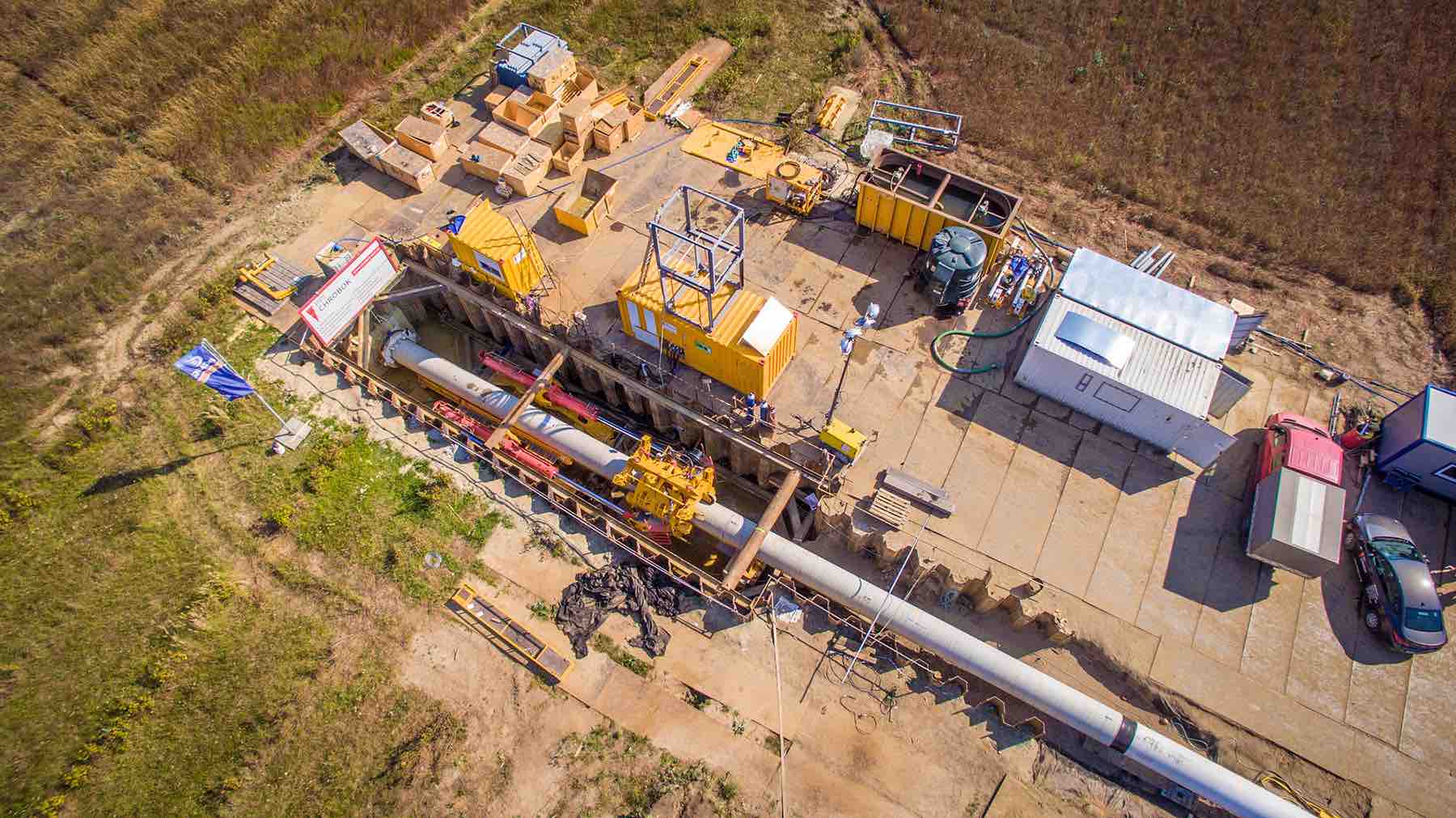March 2017, Vol. 244, No. 3
TechNotes
Direct Pipe Technology Used to Install Gas Pipeline in Poland

In the fall of 2016, drilling contractor PPI Chrobok S.A. installed two new gas pipelines in Poland. The alignment runs along existing gas lines and through geologically challenging terrain.
With the laying of the 700- and 464-meter-long pipelines, Herrenknecht’s Direct Pipe technology was used in Poland for the first time.
With the construction of a new north-south pipeline connection, Poland is reacting to the increasing local demand for gas. Part of this network expansion is the Czeszów-Wierzchowice Gas Pipeline Project in the southwest of the country.
Until now, only horizontal directional drilling technology (HDD) had been used for crossing rivers or roads during pipeline projects in Poland. Used for decades, the method proved its worth for large numbers of boreholes, but it reaches its technical and economic limits in heterogeneous, non-stable grounds.
The sandy, sticky clay of the pipeline crossings in Wierzchowice and Czeszów presented the drilling crew with just such project conditions. Furthermore, the two alignments with lengths run along existing gas lines. Uncontrolled deviations during the drilling process thus had to be avoided at all costs.
In view of these requirements, for the first time main contractor PGNiG Technologies S.A., together with drilling contractor PPI Chrobok S.A. opted for the Direct Pipe technology from Herrenknecht. This method combines the advantages of micro-tunneling and HDD technology. In a single step the required borehole is created and the prefabricated pipe is simultaneously installed without a trench.
Thanks to the gyrocompass navigation system, which allows for an exact steering of the tunnel boring machine (TBM), the drilling crew precisely installed the two pipelines with an outer diameter of 1,047 mm underground in just 13 and 16 drilling days. In doing so, they safely crossed beneath an ecologically sensitive fish pond. The sticky ground that typically tends to cause blockages is not a barrier for the Direct Pipe method.
Even at high levels of friction resistance, the 500 tons of thrust provided by the pipe thruster in the launch shaft is more than enough. Despite the small overcut of only few centimeters, no damages were detected at the coating after the pipe laying.
Overall, a highly positive conclusion was drawn after completion of the project. With daily best performances of 147 meters, according to Roland Kośka, planning and monitoring manager for client GAZ-SYSTEM.
“As a combination of HDD and micro-tunneling, Direct Pipe overcomes respective limitations, which, to a large extent, are no longer obstacles to pipeline construction,” Kośka said. “This will also allow us to pursue new projects in the future and complete them economically, quickly and with minimal impact on the local infrastructure and environment.”





Comments